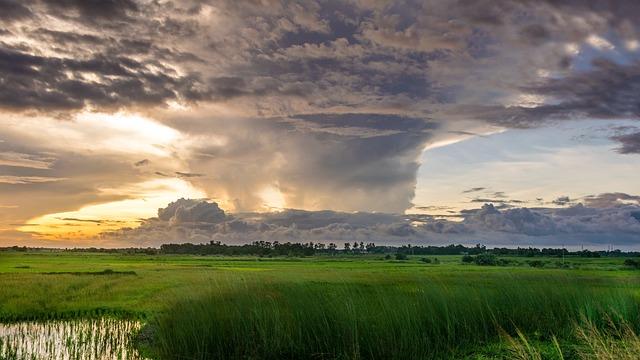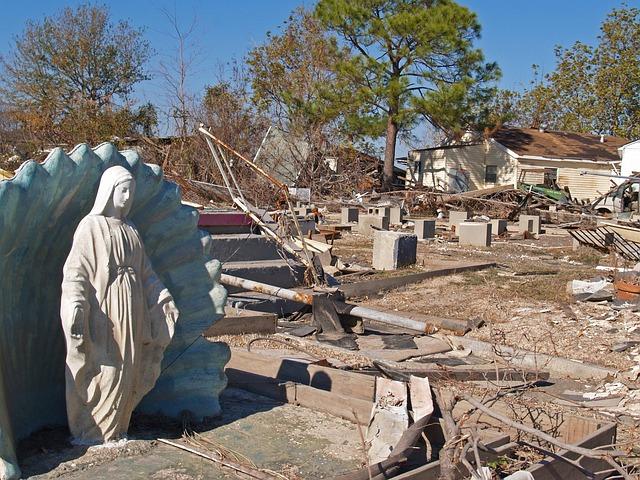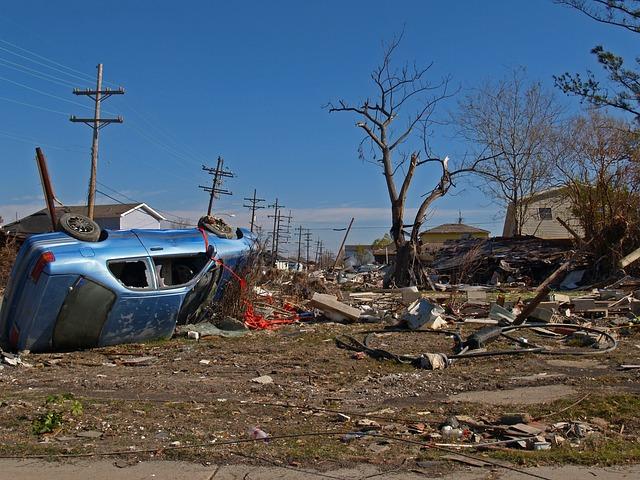- Introduction
- The Impact of Katrina's Wrath
- Recovery Efforts After Hurricane Katrina
- Lessons Learned from Hurricane Katrina
- Preventative Measures for Future Disasters
- Conclusion
- FAQs
Introduction
Hurricane Katrina made landfall on the Gulf Coast of the United States in August 2005, leaving a trail of destruction in its wake. This natural disaster, one of the deadliest and costliest in American history, exposed vulnerabilities in emergency response systems and infrastructure.
The Impact of Katrina's Wrath
As Hurricane Katrina barreled through the Gulf Coast region, it caused catastrophic flooding and widespread damage to homes, businesses, and public infrastructure. The storm surge breached levees, leading to the inundation of New Orleans and other areas, resulting in loss of life and displacement of thousands of residents.

(Image: Pixabay/@waqutiar)
The aftermath of Katrina left communities reeling, struggling to cope with the immense destruction. The economic impact was profound, with billions of dollars in damages and long-term repercussions on the region's economy.
The environmental impact of the hurricane was also significant, with oil spills, pollution, and ecosystem disruption causing long-lasting harm to the Gulf Coast's delicate ecosystems. The devastation brought about by Katrina underscored the importance of preparedness and resilience in the face of natural disasters.
Recovery Efforts After Hurricane Katrina
In the wake of the disaster, extensive recovery and rebuilding efforts were launched in the affected areas. These initiatives aimed to restore infrastructure, provide housing assistance, and support displaced individuals and families in rebuilding their lives.

(Image: Pixabay/@Maryam62)
Federal and state governments, along with non-profit organizations and volunteers, played crucial roles in the recovery process. Despite the challenges and setbacks, progress was made in revitalizing communities and restoring essential services.
Recovery efforts also focused on improving disaster response capabilities and increasing community resilience to future storms. Lessons learned from the aftermath of Katrina informed policy changes and emergency management strategies aimed at better protecting vulnerable populations and reducing the impact of future disasters.
Lessons Learned from Hurricane Katrina
Hurricane Katrina served as a wake-up call, highlighting the need for improved disaster preparedness and response protocols. The failures and shortcomings exposed by the storm prompted a reevaluation of emergency management practices at all levels of government.

(Image: Pixabay/@raggio5)
One of the key lessons from Katrina was the importance of robust infrastructure and effective communication systems in times of crisis. Investments in flood protection, early warning systems, and coordination among agencies were prioritized to prevent similar catastrophes in the future.
Additionally, the humanitarian response to Hurricane Katrina shed light on racial and socio-economic disparities in disaster relief efforts, sparking conversations about equity and social justice in emergency management practices. These discussions led to reforms aimed at ensuring fair and equitable treatment for all communities in times of crisis.
Preventative Measures for Future Disasters
In the years following Hurricane Katrina, significant strides were made in implementing preventative measures to mitigate the impact of future disasters. Investments in infrastructure resilience, community engagement, and emergency planning have been key components of these initiatives.

(Image: Pixabay/@Curioso_Photography)
Efforts to strengthen building codes, improve drainage systems, and enhance evacuation plans have helped bolster the region's ability to withstand hurricanes and other natural hazards. Awareness campaigns and community training programs have also empowered residents to take proactive steps to protect themselves and their neighborhoods.
By prioritizing disaster risk reduction and sustainability in urban planning and development, Gulf Coast communities are better equipped to confront the challenges posed by climate change and extreme weather events. The legacy of Hurricane Katrina continues to shape policies and practices aimed at building more resilient and adaptive societies.
Conclusion
Hurricane Katrina was a transformative event that exposed vulnerabilities in disaster response and sparked significant changes in emergency management practices. The lessons learned from this tragedy have informed policy decisions, infrastructure investments, and community resilience efforts to better prepare for and respond to future disasters.
FAQs
How did Hurricane Katrina impact the Gulf Coast region?
Hurricane Katrina caused catastrophic flooding, widespread damage, and loss of life in the Gulf Coast region, particularly in New Orleans and surrounding areas.
What were some of the key lessons learned from Hurricane Katrina?
Key lessons from Hurricane Katrina included the importance of robust infrastructure, effective communication systems, and equitable disaster relief efforts to mitigate the impact of future disasters.
What preventative measures have been taken to enhance disaster resilience in the Gulf Coast region?
Preventative measures in the Gulf Coast region have focused on infrastructure resilience, community engagement, and disaster risk reduction initiatives to better prepare for and respond to future disasters.

